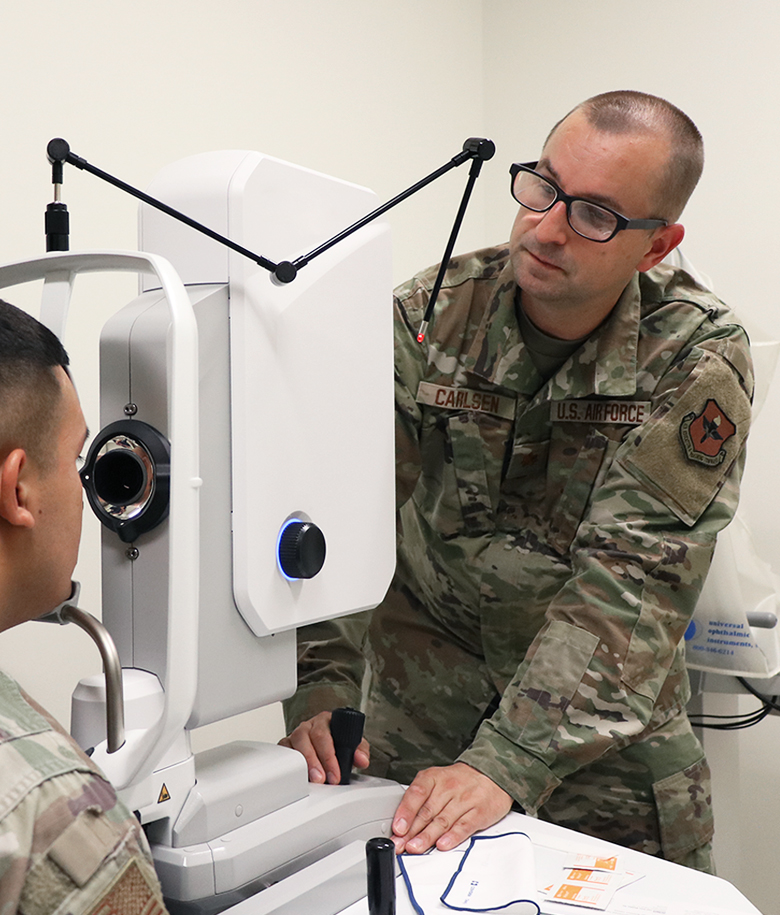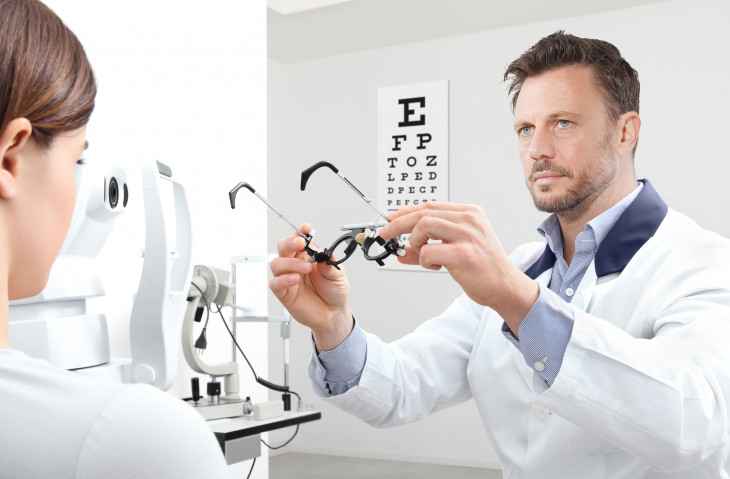Check Out Advanced Solutions at Opticore Optometry for Eye Wellness
Check Out Advanced Solutions at Opticore Optometry for Eye Wellness
Blog Article
Checking Out the most recent Technical Innovations in Optometry and What They Mean for Eye Doctors
From the accuracy of Optical Comprehensibility Tomography to the nuanced insights provided by AI-driven diagnostic tools, these advancements are setting brand-new standards in client analysis and treatment. As these innovations permeate the practice, optometrists are faced with the obstacle of welcoming these tools to enhance individual end results.
Innovations in Diagnostic Devices
Progressing the field of optometry, advancements in analysis devices have actually changed the means eye care professionals examine and identify aesthetic disabilities and eye problems. The past decade has actually experienced considerable technical improvements, making it possible for more exact and detailed analyses. Optical Comprehensibility Tomography (OCT), for instance, provides high-resolution cross-sectional pictures of the retina, permitting the early discovery of illness such as glaucoma and age-related macular deterioration. This non-invasive imaging technique has actually ended up being essential in modern optometric technique.
One more secret innovation is the intro of advanced corneal topography systems, which map the surface area curvature of the cornea with accuracy. These devices are especially beneficial for suitable call lenses and identifying corneal conditions. Digital retinal imaging has changed conventional ophthalmoscopy, offering comprehensive, panoramic views of the retina that assist in comprehensive aesthetic assessments.
The advancement of wavefront aberrometry has actually additionally been essential, allowing the analysis of refractive mistakes with unmatched precision (Optometrist Chino). This modern technology aids in tailoring corrective lenses and enhancing medical results for refractive surgical procedures. Jointly, these analysis developments equip eye doctors to provide remarkable patient treatment, making certain very early intervention and customized treatment techniques, inevitably improving visual health results
AI in Person Administration
Building on the foundation of cutting-edge analysis tools, the consolidation of fabricated intelligence (AI) in patient monitoring represents a transformative leap for optometry. AI systems are significantly employed to enhance efficiency, precision, and personalization in person care.
Moreover, AI-driven platforms promote structured patient interactions and administrative procedures. Automated scheduling, digital consultations, and customized follow-up strategies not just improve patient fulfillment yet likewise enhance time monitoring for professionals. These systems can triage patients based on the urgency of their problems, guaranteeing that those in critical demand obtain timely interest.
Moreover, AI improves decision-making by supplying optometrists with evidence-based referrals and therapy pathways. By integrating information from electronic wellness documents, AI devices use understandings that educate professional choices, minimizing the threat of errors and improving individual outcomes. As AI proceeds to evolve, its role in client management will likely increase, improving the landscape of optometric treatment.
Advances in Retinal Imaging
In the world of optometry, retinal imaging has actually seen amazing technical developments that are improving diagnostic abilities and patient treatment. Advancements such as Optical Comprehensibility Tomography (OCT) and fundus digital photography have reinvented just how optometrists imagine and examine the retina.
Enhanced imaging modalities like OCT angiography are additional refining analysis accuracy. Optometrist Chino. Such advancements assist in special info the identification of minute retinal changes that can represent disease progression.
In addition, improvements in expert system are augmenting retinal imaging by enabling computerized evaluation of big datasets. These systems aid eye doctors in determining patterns indicative of pathology, thus improving analysis precision and efficiency. Collectively, these advancements are changing retinal imaging right into a foundation of modern eye care, boosting results and increasing healing opportunities.
Teleoptometry's Growing Role
Teleoptometry is increasingly coming to be an essential element of eye care, driven by developments in digital interaction and diagnostic devices. This is especially useful in underserved and country locations where accessibility to specialized eye care is typically minimal.
The integration of synthetic knowledge (AI) more enhances teleoptometry, allowing the analysis of aesthetic information and assisting in the detection of eye problems such as glaucoma and diabetic person retinopathy. AI-powered formulas can swiftly interpret intricate imaging data, offering eye doctors with valuable insights that strengthen professional decision-making.
Additionally, teleoptometry supports continuity of treatment via smooth integration with electronic health and wellness documents (EHRs), permitting optometrists to preserve comprehensive client backgrounds. When consulting with different experts., this makes sure that clients receive individualized and constant care also.
Regardless of these benefits, difficulties remain, consisting of making sure data safety and security and taking care of client assumptions. Teleoptometry stands for a significant stride towards more easily accessible, reliable, and patient-centered eye treatment. As technology develops, its duty is positioned to broaden even more.

Future Fads in Eye Care
A myriad of cutting-edge patterns is set to improve the future of eye care, driven by technical advancements and the evolving needs of people. One considerable pattern is the combination of expert system (AI) in diagnostics, which promises to improve the precision and effectiveness of eye evaluations. AI formulas can analyze substantial amounts of information from retinal images, potentially identifying problems website here like diabetic retinopathy and glaucoma earlier than typical techniques.
Moreover, individualized medicine is gaining traction in optometry, with genetic screening educating personalized treatment strategies. This approach aims to enhance client outcomes by tailoring treatments to private hereditary accounts. Wearable innovation, such as clever call lenses, is additionally on the perspective, using real-time monitoring of intraocular pressure or sugar levels, hence supplying continuous understandings into ocular and systemic health.
The fostering of enhanced reality (AR) and online reality (VIRTUAL REALITY) in training and client education and learning is an additional arising trend. These modern technologies use Extra resources immersive experiences that can boost understanding and skills both for individuals and optometrists. As these trends advance, eye doctors need to remain abreast of technical innovations to provide sophisticated care, ensuring better person end results and contentment in the dynamic landscape of eye care.
Final Thought

Collectively, these analysis innovations equip eye doctors to provide superior patient treatment, ensuring very early treatment and tailored therapy methods, inevitably improving visual health results.

As these modern technologies continue to advance, optometrists should adjust and include them into technique, ultimately maximizing workflow performance and raising the criterion of eye care delivered to individuals.
Report this page